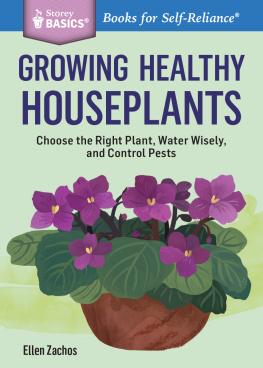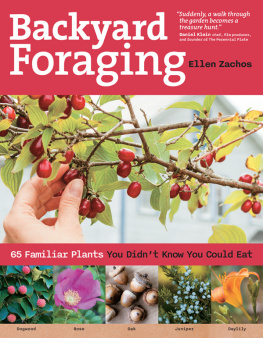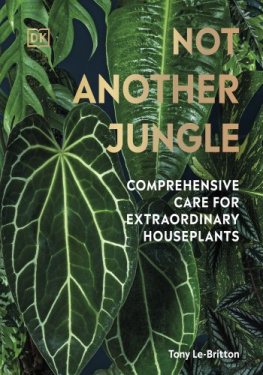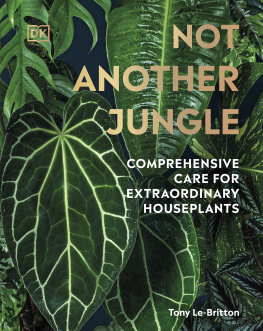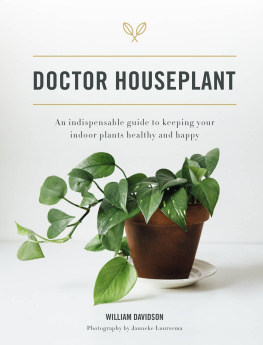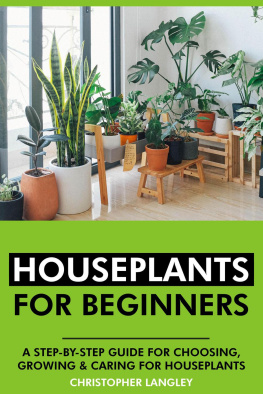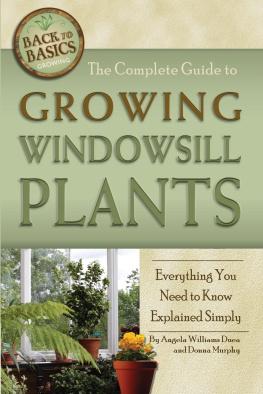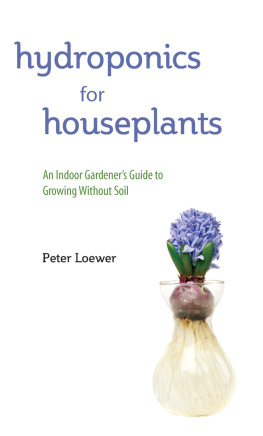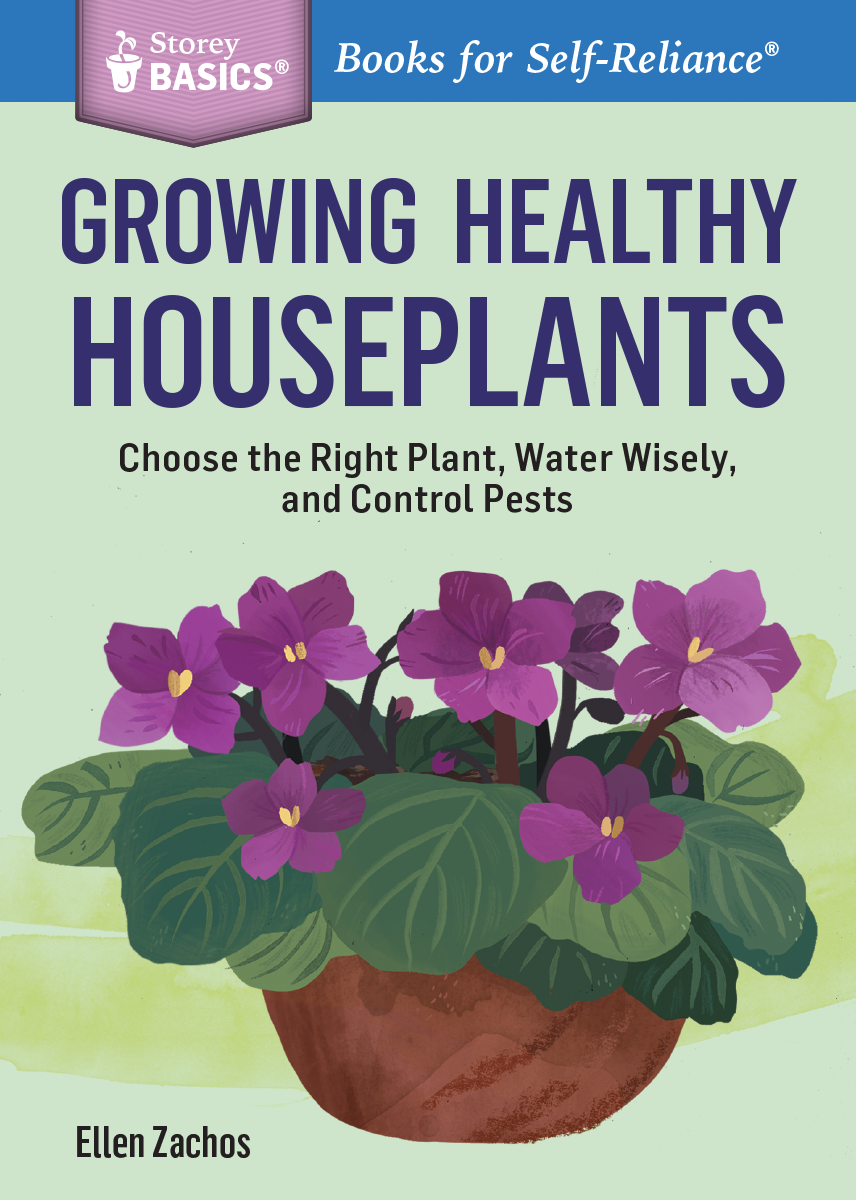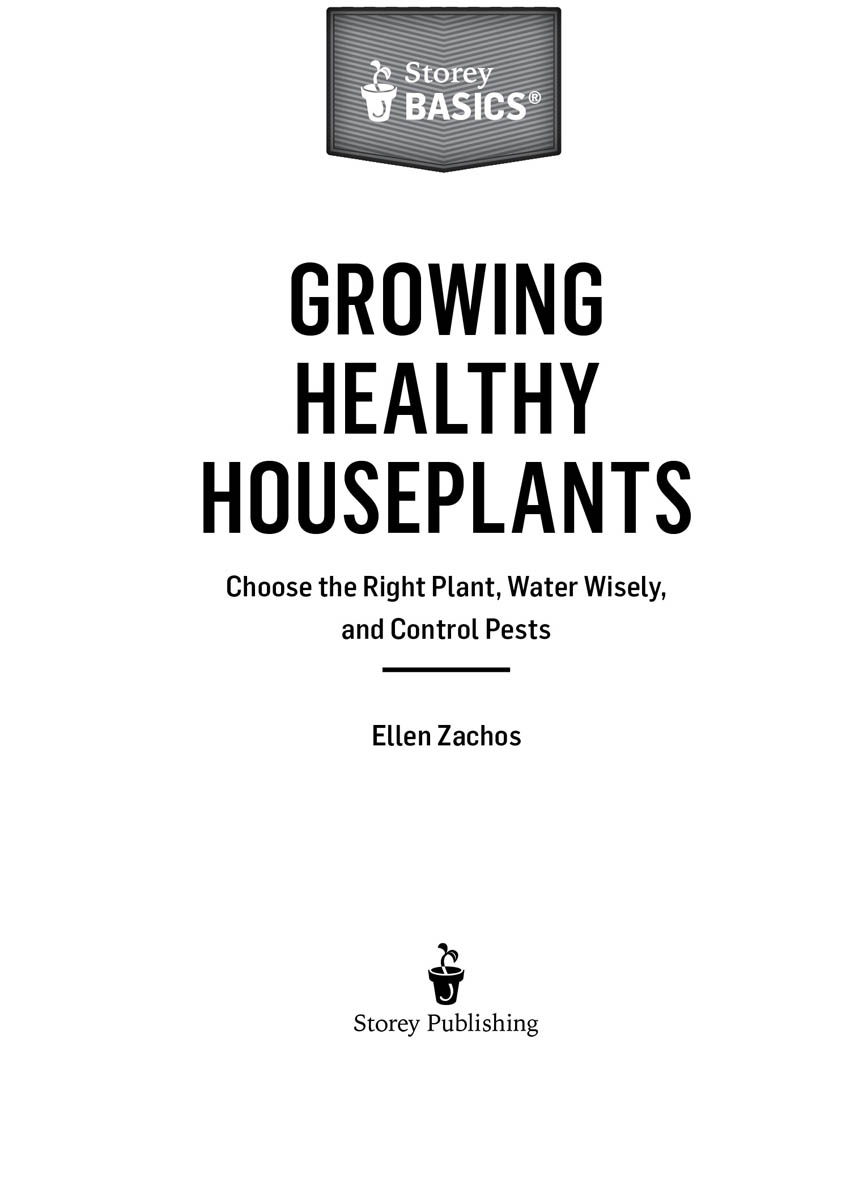Contents
Preface
I cant imagine living in a home without greenery, but 20 years ago I feared the houseplant, convinced Id kill any I touched. Im not sure why I was so afraid, since Id never actually tried growing anything, but the whole idea seemed very mysterious and intimidating.
Then one day, when I was doing a show in Florida (my first career was acting), a friend gave me a peace lily as an opening- night gift. That simple houseplant changed my life. It brightened up my rental condo for the run of the show, and when the play was over I carefully packed it in my carry-on luggage and brought it back to New York City. I didnt understand the joy I felt with the unfurling of each new leaf, but I knew I wanted more so much more that eventually I left the glamorous world of show business to become a professional gardener.
If I had a nickel for every time someone told me they couldnt grow houseplants, Id have at least 50 bucks. The truth is that my thumb is no greener than anyone elses. If you can follow a recipe or assemble a bookcase, you can grow houseplants. Heres my recipe for success:
- Accurately evaluate your light (see ).
- Choose a plant that suits your light (see list of plants starting ).
- Apply the right watering techniques (see ).
- Sit back and watch it grow.
Its important to start with low-maintenance houseplants because success breeds success. Once youve experienced how easy it is to garden indoors, youll want to do more, and before you know it youll be planting terrariums, propagating leaf cuttings, and installing grow lights. I can see it now.
Why You Need Houseplants
Houseplants improve the air we breathe. Its an impressive process: Plants combine water and carbon dioxide with sunlight to produce sugars and oxygen. They save the sugars for later, but they generously share that oxygen with us. Some plants even remove pollutants such as formaldehyde and benzene from the air we breathe. That might seem like a sophisticated, technical, scientific accomplishment, but for plants its just part of their day-to-day, get-up-and-go-to-work routine.
Houseplants are alive! And because theyre alive, they bring life into your home. The most sterile environment becomes warmer and more welcoming when graced with a living plant. And a windowsill full of foliage and blooms? Its downright energizing. Its easy to add plants to every room in the house. An herb garden in the kitchen is a tasty decoration. Sprouting an avocado seed with your child adds life to her play space and teaches her about nature. A fern in the bathroom takes advantage of the humidity left over from your morning shower. And an elegant palm is a graceful addition to any living room.
Houseplants are decorative. Youve got a personal style, and your plants communicate that style. What you choose to grow (and how you choose to grow it) says something about your aesthetic and reveals your creative side. And heres the beauty part: if you decide to redecorate, changing your houseplants can give a whole new look to a room. A fragrant jasmine is stimulating and sensual; it says you enjoy both exotic blooms and strong perfumes. An architectural sago palm tells the world you appreciate living sculpture and strong form. A trailing ivy is the perfect choice for a country kitchen, where its classic shape complements traditional decor.
Houseplants are inherently optimistic. Okay, the plants themselves arent optimistic, but having them in your home makes you optimistic because growing plants means youre looking toward the future. You anticipate each new leaf and every bloom, and rejoice in each success.
Houseplants make a house a home. Remember that rental condo in Florida? It was generic, filled with someone elses wicker furniture and abstract oil paintings. My peace lily changed all that, adding a personal flourish to my temporary digs. Feather your nest with foliage and flowers to create a personal space for yourself, your family, and your friends.
Indoor gardening satisfies the human desire to nurture a living thing. Its an easy and inexpensive way to unleash your creativity, have fun, and do something with your own two hands. You can do it on any scale, in any style that suits you. Take a deep breath, and let me show you how.
Introduction
Learn to Speak Plant
Before we dive into indoor growing in all its glory, you need some basic vocabulary.
Whats in a name? Scientists have given all living species (plants, animals, insects) their own two-part Latin names, known as binomials. Some gardeners resist using Latin names, claiming theyre hard to pronounce and highfalutin. Alas, if you want to be sure youre getting exactly the plant youre looking for, you must use Latin names. Not only do common names vary from place to place, but one common name may be used for different plants. If youre dying for a pot of coralberry and order it as such, you may end up with either Ardesia crenata or Symphoricarpos orbiculatus. Theres a big difference.
A plant name is composed of a genus, plus either a species or a hybrid name. If the plant is unique, it may be given an additional cultivar name to distinguish it from other plants of the same species or hybrid. Hybrids may be naturally occurring or man-made. A cultivar is always man-made. Sound confusing? Lets think about plant names in terms of cars. Its really not so difficult.
A Key to Understanding Latin Plant Names
Tropical Plant vs. Houseplant
Most people dont realize that many common houseplants are tropical plants. You say tropical plant and people think exotic, fussy, and difficult to grow. Well, that couldnt be further from the truth. If youve ever grown a spider plant, a pothos, or a weeping fig... youve grown a tropical!
Whats the difference between a tropical plant and a houseplant? A houseplant is any plant you grow successfully in your home. A tropical plant is any plant native to the tropics (the part of the earth located between the Tropic of Cancer to the north and the Tropic of Capricorn to the south). Most of our houseplants are actually tropicals, which makes a lot of sense when you think about it. So lets think about it.
A Tropical Environment
In the tropics, the sun is basically directly overhead throughout the year, which makes its light intensity uniform. In temperate zones, the angle of the sun changes greatly from season to season. This means that light intensity is much greater in temperate summers than it is in temperate winters.
The suns angle also affects a locations temperature. Because the sun is directly overhead year-round in the tropics, temperatures do not fluctuate as widely as they do in temperate regions. The temperature in Cancun is 80F (27C) in February and 90F (32C) in August. In Chicago, the difference between average summer and winter temperatures can be a whopping 60 degrees Fahrenheit (33 degrees Celsius).
And finally, day length in the tropics is essentially the same year-round, while in temperate climates you may get 15 hours of daylight in summer and a mere 9 in winter.
So how does this relate to growing tropical plants as houseplants? Well, your living room feels just like the tropics... as far as your plants are concerned. It doesnt snow; the temperature is generally between 55 and 80F (1327C); and there are approximately 12 hours of light per day (counting light from lamps), of even intensity.

